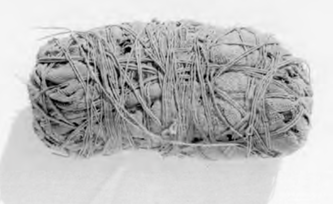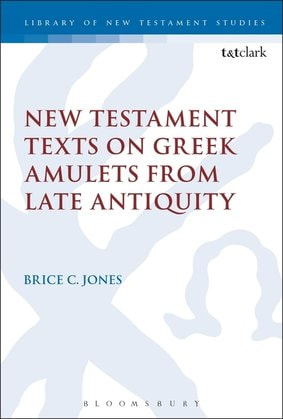|
In the year 197 C.E., an elite Egyptian farmer by the name of Gemellus submitted a series of petitions to the Roman prefect about his neighbors who had been stealing produce from his fields. Copies of the petitions, written in Greek on papyrus, were discovered in an excavated house and courtyard in the ancient Egyptian village of Karanis in 1924. Gemellus tells us that three neighbors—Julius, his wife, and a certain Zenas—performed a strange curse or binding spell to keep Gemellus and those with him from stopping them from stealing the harvest. Binding spells were common in antiquity and the ritual ingredients that might have been used are known from a variety of Greco-Egyptian ritual manuals. Yet none of those were used here. Instead, the binding spell, performed publicly, was achieved by throwing a dead fetus (βρέφος) at Gemellus and his companions. Here is the relevant portion of text from P.Mich. 6.423: “In addition, not content, he [Julius] again trespassed with his wife and a certain Zenas, having with them a brephos [βρέφος], intending to encircle my tenant farmer with malice so that he should abandon his labor after having harvested in part from another allotment of mine, and they themselves gathered in the crops. When this happened, I went to Iulius in the company of officials, in order that these matters might be witnessed. Again, in the same manner, they threw the same brephos [βρέφος] toward me, intending to encircle me also with malice, in the presence of Petesouchos and Ptollas, elders of the village of Karanis who are exercising also the functions of the village secretary, and of Sokras the assistant. And while the officials were there, Iulius, after he had gathered in the remaining crops from the fields, took the brephos [βρέφος] away to his house.” This is the first attested case of fetus-throwing in the documentary record from Egypt. There is also no parallel in the ritual literature from antiquity. Nonetheless, its desired effect (as interpreted by Gemellus) was achieved, because no one tried to stop the thieves from stealing from Gemellus.  David Frankfurter has drawn attention to other wrapped fetuses from antiquity that apparently served as “power-objects.” In Kellis, for example, a fourteen-week fetus wrapped in linen cloth and cord (image at right) was found in debris connected with the roof of a fourth-century house. Frankfurter suggests it was used for the purpose of “binding” the house. But why throw a fetus? It appears its association with impurity might have had something to do with it. Another suggestion from Frankfurter is the “weirdness” factor. He indicates that weirdness was seen “as a kind of theatre for sorcery.” To quote Frankfurter, “Fetus magic, then, represented a quite rare use of impure substances that themselves carried little significance when “in place” but an awesome potency when “out of place”—especially in the full theatre of magical aggression implied in the Karanis papyrus.” I think this raises all sorts of interesting questions about the social world of magic. At the most basic level, it is worth imagining just how this would have been perceived by those involved. In simpler terms: what in the world was going through these guys' heads as they experienced a dead fetus being launched at them in real time? If anything, the odd incident recorded in this Karanis papyrus shows that curse techniques were more varied than what we know from the ritual literature of the time.
4 Comments
|

Available at Amazon!
Archives
June 2020
Categories
All
|